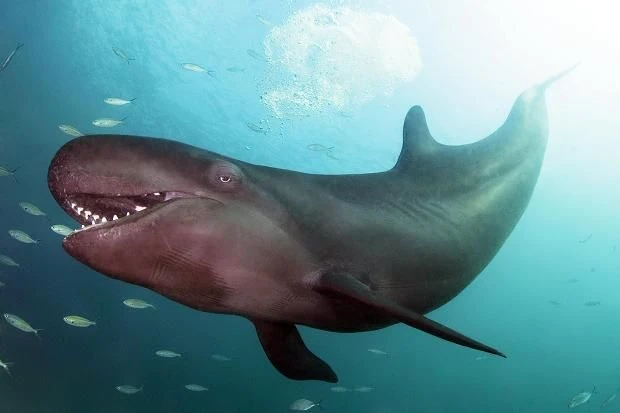False Killer Whale : A Comprehensive Guide to the Mysterious Marine Mammal
The false killer whale (Pseudorca crassidens) is one of the most fascinating and lesser-known members of the oceanic dolphin family. Despite its name, it is not a whale but a large dolphin species that shares some physical and behavioral traits with killer whales. This article delves into every aspect of the false killer whale, including its biology, behavior, habitat, conservation status, and its relationship with humans.
What is a False Killer Whale?
Scientific Classification
- Kingdom: Animalia
- Phylum: Chordata
- Class: Mammalia
- Order: Cetacea
- Family: Delphinidae
- Genus: Pseudorca
- Species: Pseudorca crassidens
Physical Characteristics
False killer whales are large, sleek marine mammals with a distinct appearance:
- Size: Adults can grow up to 6 meters (20 feet) in length.
- Weight: They weigh between 1,200 to 2,200 kilograms (2,600 to 4,900 pounds).
- Coloration: Their bodies are uniformly dark gray or black, with a lighter patch on the chest.
- Head: They have a rounded head with a slight beak and no prominent rostrum (snout).
- Fins: Their dorsal fin is sickle-shaped and located midway down their back.
Habitat and Distribution
Where Do False Killer Whales Live?
False killer whales are found in tropical and temperate waters worldwide. They prefer deep offshore waters but can occasionally be seen near coastlines. Their range includes:
- Pacific Ocean: From Hawaii to Japan and Australia.
- Atlantic Ocean: From the Gulf of Mexico to the Mediterranean Sea.
- Indian Ocean: Around Sri Lanka, the Maldives, and South Africa.
Migration Patterns
False killer whales are highly mobile and do not have a fixed migration pattern. They travel in pods and are known to cover large distances in search of food.
Behavior and Social Structure
Social Behavior
False killer whales are highly social animals and live in pods of 10 to 60 individuals. These pods are often part of larger communities, and members form strong bonds with one another. They are known for their playful and curious nature, often interacting with other marine species, including bottlenose dolphins and humpback whales.
Communication
Like other dolphins, false killer whales use echolocation to navigate and hunt. They produce a variety of vocalizations, including clicks, whistles, and pulsed calls, to communicate with each other.
Hunting and Diet
False killer whales are apex predators and have a diverse diet, including:
- Fish: Tuna, mahi-mahi, and cod.
- Cephalopods: Squid and octopus.
- Marine Mammals: Occasionally, they prey on smaller dolphins and seals.
They are cooperative hunters and often work together to herd and catch prey.
Reproduction and Lifespan
Mating and Calving
- Mating Season: False killer whales do not have a specific breeding season and can mate year-round.
- Gestation: The gestation period lasts about 15 months.
- Calving: Females give birth to a single calf, which is nursed for up to 2 years.
Lifespan
False killer whales have a lifespan of 50 to 60 years in the wild. However, their longevity can be affected by threats such as pollution, fishing nets, and habitat degradation.
False Killer Whales and Humans
Interaction with Humans
False killer whales are known for their friendly and curious behavior toward humans. They have been observed approaching boats and interacting with divers. In some regions, they are part of ecotourism activities, where people can observe them in their natural habitat.
Captivity
False killer whales are rarely kept in captivity due to their large size and complex social needs. However, a few individuals have been held in marine parks, where they have been trained to perform in shows.
Cultural Significance
In some cultures, false killer whales are revered as spiritual beings. For example, in Hawaiian culture, they are considered ‘aumakua (family guardians) and are protected by local traditions.
Conservation Status and Threats
Conservation Status
The false killer whale is listed as Near Threatened on the IUCN Red List of Threatened Species. Some populations, such as the Hawaiian false killer whale, are considered Endangered due to their small numbers and specific threats.
Threats
- Bycatch: False killer whales are often accidentally caught in fishing nets, particularly in longline fisheries targeting tuna and swordfish.
- Pollution: Chemical pollutants and plastic waste can accumulate in their bodies, affecting their health and reproduction.
- Habitat Loss: Coastal development and climate change can disrupt their natural habitat and food sources.
- Noise Pollution: Underwater noise from ships and industrial activities can interfere with their communication and echolocation.
Conservation Efforts
Several initiatives are underway to protect false killer whales:
- Marine Protected Areas: Establishing protected zones to safeguard their habitat.
- Fishing Regulations: Implementing measures to reduce bycatch, such as using circle hooks and acoustic deterrents.
- Research and Monitoring: Studying their behavior and population dynamics to inform conservation strategies.
False Killer Whales in Popular Culture
False killer whales have made appearances in documentaries, films, and literature, often highlighting their intelligence and social behavior. They are also featured in marine conservation campaigns to raise awareness about the threats they face.
Interesting Facts About False Killer Whales
- Name Origin: The name “false killer whale” comes from their resemblance to killer whales (Orcinus orca), particularly their skull structure.
- Hybridization: False killer whales have been known to hybridize with bottlenose dolphins, producing offspring known as wholphins.
- Mass Strandings: False killer whales are prone to mass strandings, where entire pods beach themselves. The reasons for this behavior are not fully understood.
- Intelligence: They are highly intelligent and have been observed using tools, such as sponges, to protect their snouts while foraging.
How to Help False Killer Whales
- Support Sustainable Fishing: Choose seafood that is certified by organizations like the Marine Stewardship Council (MSC).
- Reduce Plastic Use: Minimize plastic waste to prevent ocean pollution.
- Support Conservation Organizations: Donate to or volunteer with groups working to protect marine life, such as the False Killer Whale Project and Sea Shepherd.
- Spread Awareness: Educate others about the importance of conserving false killer whales and their habitat.
Conclusion
The false killer whale is a remarkable and enigmatic marine mammal that plays a vital role in the ocean ecosystem. Despite facing numerous threats, these intelligent and social creatures continue to captivate scientists and marine enthusiasts alike. By understanding their biology, behavior, and conservation needs, we can take steps to ensure their survival for generations to come.
Whether you’re a marine biologist, a conservationist, or simply an admirer of marine life, the false killer whale is a species worth learning about and protecting. Their story is a reminder of the interconnectedness of all life in our oceans and the importance of preserving these incredible creatures.






